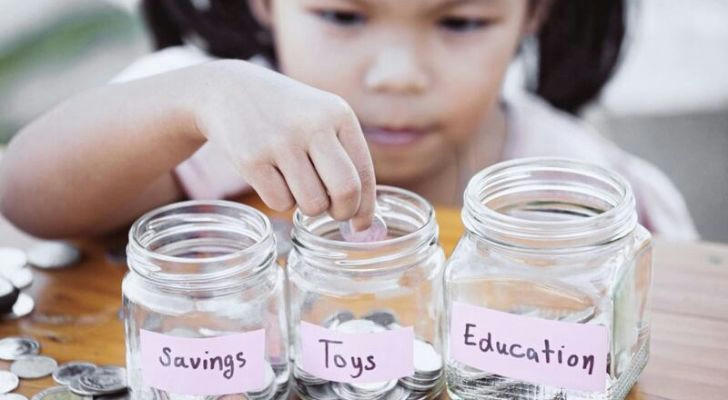How to Educate Children to Develop a Good View of Money

In today's society, the popularity of mobile payments and online shopping has made money "invisible and intangible", and the consumption methods that children have been exposed to since childhood are very different from the past. In such a consumption environment, if children do not receive correct guidance in time, it is easy for them to form the habit of "spending money without regret" and "consumption without restraint".
Studies have shown that the earlier children start money education, the more rational decisions they can make in terms of savings, consumption and financial management when they grow up. Parents play a key role in the formation of their children's views on money. They not only need to teach basic money concepts, but also guide them to establish a healthy and positive attitude towards money through behavior, communication and role models in daily life. Correct financial education should start from the family and from an early age.
Financial education focus for different age groups
1. Preschoolers (3-6 years old): Build basic concepts of money
Educational focus : Understand money and understand that “money can buy things”.
Practice method :
Use toy coins or real change to make game purchases.
Help your children understand that “money is limited” and that if they buy one thing, they cannot buy another.
Cultivate a sense of saving through the "Piggy Bank".
Parents give an example : when shopping, give children a small amount of money and let them choose the items they want to buy, so as to cultivate their awareness of making choices.
2. Primary school stage (7-12 years old): learning to save and simple financial management
Educational focus : understanding savings, planned consumption, and delayed gratification.
Practice method :
Give pocket money but not unlimited, and teach your children how to manage and use it.
Set a simple savings goal (like buying a favorite book).
Encourage your child to record their daily expenses (using a simple account book or app).
Data support : According to a survey by Greenlight, primary school students with savings goals can save an average of 43% of their pocket money.
3. Junior high school (13-15 years old): Understanding income sources and budget planning
Educational focus : Income is not easy to come by, consumption needs to be planned.
Practice method :
Encourage children to "earn" pocket money by completing housework, taking small part-time jobs, etc.
The church sets a monthly pocket money budget, which is divided into three categories: “saving, spending, and sharing.”
Share real-life consumption examples, such as utility bills, monthly expenses, etc.
Parent suggestion : Guide children to participate in family budget discussions so that they can see “how the money is spent”.
4. High school students and above (over 16 years old): Develop financial management awareness and independent consumption ability
Education focus : Understand the basics of financial management tools, credit, investment risks, etc.
Practice method :
Teach your children to use a savings account and the difference between bank cards and credit cards.
Briefly introduce basic financial concepts such as interest, compound interest, and inflation.
Practice by simulating budget life (e.g. college living expenses, daily expenses).
Example suggestion : You can compare mobile phone package prices or travel budgets together to cultivate rational comparison and decision-making skills.

Practical Education Methods and Techniques
1. Set up the "saving-spending-sharing" three-pot method
Example : According to the Financial Education Research Report, 84% of children were able to better understand the allocation ratio of money after participating in the "Saving-Spending-Sharing" method, and one year later, their savings ratio increased by an average of 22%.
Data support : This method not only helps children understand saving and consumption, but also allows them to be exposed to the concepts of donation and sharing at an early age, and cultivate a sense of social responsibility.
2. Guide students to set small goals and cultivate delayed gratification
Data support : According to Stanford University's "Marshmallow Experiment", children who learn to delay gratification usually have better financial conditions and more stable wealth accumulation in adulthood. Children gradually learn how to plan rationally by setting savings goals and postponing immediate consumption.
Example : For example, a 9-year-old girl set a goal to buy a favorite toy. After saving her pocket money for two months, she finally achieved her goal and experienced the satisfaction of delayed gratification.

3. Use daily shopping scenarios to teach
Data support : According to the "Youth Consumer Behavior Research" report, 60% of children said that with their parents' shopping guidance, they can pay more attention to the balance between price and quality when choosing products, rather than relying solely on promotional information.
Example : A parent showed his child two drinks of the same brand while shopping in a supermarket. Although one of them was on sale, the parent explained the difference in price and quantity. The child finally chose the product with a more suitable price and expressed his thoughts on the promotion.
4. Encourage children to “earn” pocket money
Data support : According to the U.S. "Children's Financial Education Report", about 70% of teenagers said that after doing housework and part-time jobs, they have a deeper understanding of the value of money, especially a clear understanding of the relationship between wages and income.
Example : A 12-year-old boy earned pocket money by helping his neighbor clean the garden. He divided the $50 he earned into two parts: "saving" and "spending", and discussed with his parents at home how to use the money.

5. Encourage accounting and review of consumption
Data support : According to the "Report on Bookkeeping and Youth Financial Literacy Development", in families that participate in regular bookkeeping, children's savings habits and consumption awareness have been effectively improved, and 80% of children said that they have a clearer understanding of their monthly expenses through bookkeeping.
Example : A 14-year-old child recorded his spending with his parents every week and compared his actual spending with his budget. Through this process, he learned how to plan his pocket money and distinguish between "want" and "need" spending.
6. Parents should set an example by words and deeds.
Data support : Research shows that parents’ financial behavior in front of their children directly affects their children’s future financial habits. The Family Financial Behavior Study shows that about 72% of children say they will imitate their parents’ shopping and saving practices.
Example : A family has a regular budget discussion every year. The parents show their children how to allocate expenses reasonably based on their income. Through observation, the children gradually learn how to carry out daily financial planning.
